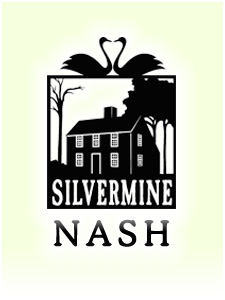During the Second World War, the majority of the Guild complex was taken over by Civil Defense and the local chapter of the American Red Cross, with the Barn utilized for classroom space for returning war veterans. Starting in 1943 and continuing to the end of the war, the Guild created the Annual War Bond Exhibition in which artists were paid for their work in war bonds. At the close of the war the Guild held an “all-comprehensive membership exhibition” in New York with an outside jury choosing the best paintings. The post-war period began a new era of expansion for the Arts Guild starting in 1947 with the acquisition of “the barracks’” a surplus building which was to house the Farrell Gallery, school director’s office and storage. This was followed in 1950 with the construction of the first school building filling the need for heated classroom space. Spearheaded by John Vassos in 1948 as part of the Guild’s expansion program, the entire project was entirely funded by Florence Schick Gifford after whom the Silvermine School of Art building was named. The school would include a curriculum which included a painting studio, a mirrored dance studio, and children’s workshop. Dance classes, particularly ballet, hosted notable performers such as Alvin Ailey and Merce Cunningham. A new generation of artists, writers and musicians continued to thrive in and visit Silvermine. John McClelland (1919- ), an etcher who created plates using classic nursery rhymes, lived at both the “Pink House” at 1057 Silvermine Road, next to the Guild, and 174 Perry Avenue. The late 1940s saw the establishment of the New England Exhibition, a juried exhibition originally open to the New England states. The exhibition continues to the present day and, renamed Art of the Northeast, was expanded to include New York, New Jersey and Pennsylvania. It has been recognized as singularly significant in introducing emerging artists in American modernism. Juried by notable art critics, dealers, museum professionals and artists, the program hosted influential modernists such as critic Clement Greenberg, dealer Holly Solomon, Metropolitan Museum curator Henry Geldzahler, and Lowery Sims of the Museum of Modern Art. The annual exhibit continues to be the Guild’s most prestigious show. The programs at the Guild continued to expand through the 1950s. A new sculpture studio was dedicated in 1956 with an exhibition that included the work of Alexander Calder, Henry Moore, and Alberto Giacometti. Printmaking was yet another art form that was brought to the forefront of the Guild’s programs by Gabor Peterdi, a painter and printmaker who joined the Guild in 1952. Having started the printmaking department at Yale University, Peterdi established the National Print Biennial competition at Silvermine in 1959. As a result, the Guild acquired a permanent print collection utilized for exhibitions and study. The arts at Silvermine expanded to include music with the establishment of The Silvermine Chamber Music Program in 1958. The program continues to the present day with an annual series of performances each summer. The Meet the Composer program brought notable composers Aaron Copeland and Virgil Thompson to Silvermine and special concerts saw performances by popular artists like Benny Goodman. Concert pianist Edith Grunewald began a chamber music series in 1959 that became an annual event for more than forty years. An outgrowth of the successful summer music series saw the formation of the Silvermine Chamber Orchestra, established in 1966. This included members of the Silvermine String Quartet who, in the late 1960s and 1970s were the resident company, performing at Silvermine and throughout New England. The latter part of the twentieth century saw the continuation of well-established programs and introduced new ones such as the Outdoor Jazz Concerts, master dance classes by the Alvin Ailey Dancers in 1974, the “Fabulous Fakes” auctions, the Guild’s first Collage Exhibition, and a new Crafts Gallery. The Guild was renamed the Silvermine Center for the Arts in 1980 and opened a second gallery at the Metro Center in Stamford, Connecticut in 1988.
Prepared by Paul Graziano & Phillip Esser, Associated Cultural Resource Consultants, July 2007 from research in part compiled, provided and edited by Leigh Grant, Board Member, Norwalk Association of Silvermine Homeowners (NASH)
